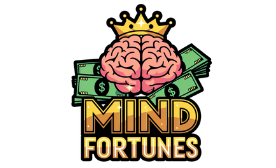Estrogen is a vital hormone in the human body, known for its role in the female reproductive system. It is primarily produced in the ovaries but also in smaller amounts by the adrenal glands and fat tissues. Estrogen not only plays a crucial role in the development of secondary sexual characteristics during puberty but also regulates the menstrual cycle and prepares the uterus for potential pregnancy. Beyond reproduction, estrogen impacts various bodily functions, including the cardiovascular, skeletal, and nervous systems.
One essential function of estrogen is maintaining bone density. It promotes the activity of osteoblasts, cells responsible for bone formation, while inhibiting osteoclasts, which break down bone. This balance is critical for preventing osteoporosis, especially in postmenopausal women when estrogen levels decline. Additionally, estrogen influences skin health and fat distribution in the body. It also plays a role in regulating cholesterol levels, supporting cognitive functions like mood regulation and memory.
Non-prescription estrogen, often derived from plant sources known as phytoestrogens, offers a natural alternative for women seeking hormonal balance. These compounds mimic estrogen’s effects in the body, providing a range of health benefits without the risks associated with synthetic hormones. Integrating phytoestrogens into the diet can help alleviate symptoms and improve overall health for women experiencing hormonal fluctuations.
One common use of non-prescription estrogen is in managing menopause symptoms. Phytoestrogens can help stabilize body temperature regulation, leading to fewer and less intense hot flashes. They can also assist with mood swings and irritability common during menopause. Incorporating foods rich in non-prescription estrogen, such as soy products, chickpeas, and lentils, can be an effective way to manage menopause symptoms and improve overall health.
Non-prescription estrogen also plays a pivotal role in maintaining bone health and reducing the risk of osteoporosis, especially in postmenopausal women. Phytoestrogens like soy isoflavones have been shown to enhance bone mineral density by promoting osteoblast activity and inhibiting osteoclast activity. Including foods like tofu, edamame, and flaxseeds in the diet can support bone health and reduce the risk of fractures in postmenopausal women.
In terms of cardiovascular health, phytoestrogens can positively influence lipid profiles by lowering LDL cholesterol and increasing HDL cholesterol. This balance is crucial for preventing the buildup of plaque in the arteries, reducing the risk of heart disease and stroke. Phytoestrogens also exhibit anti-inflammatory properties that benefit cardiovascular health by combating chronic inflammation.
The relationship between hormones and mental health is complex, with estrogen playing a significant role in mood regulation and cognitive function. Phytoestrogens can influence neurotransmitter systems, particularly serotonin, which may help alleviate symptoms of anxiety and depression. These compounds have also been linked to improved cognitive function and memory, potentially protecting against cognitive decline associated with aging and menopause.
In the quest for youthful vitality, non-prescription estrogen may hold promise in promoting skin health and protecting against age-related diseases. By supporting cardiovascular health, promoting bone density, and influencing cognitive function, phytoestrogens can contribute to a healthier aging process. Prioritizing natural sources of estrogen can enhance overall well-being and potentially lead to a more youthful and vibrant life.
Non-prescription estrogen products come in various forms, including creams, gels, patches, and supplements. Choosing the right product involves identifying specific needs, considering the form that aligns with lifestyle and preferences, and prioritizing quality by selecting products from reputable sources. It is essential to use non-prescription estrogen products safely and effectively, starting with the lowest effective dose and maintaining open communication with healthcare providers to monitor health and any potential side effects.
While many individuals find non-prescription estrogen beneficial, it is crucial to be aware of potential side effects that may arise. Common side effects include headaches, nausea, breast tenderness, and mood fluctuations, which are often mild and may resolve as the body adjusts to the additional estrogen. More serious side effects can occur with long-term use or higher doses, such as unusual bleeding, shortness of breath, chest pain, or swelling in the legs, indicating potential complications like blood clots or cardiovascular issues.
For those hesitant to use non-prescription estrogen, several alternatives are available, including lifestyle modifications and bioidentical hormone therapy. Lifestyle changes like regular exercise, a balanced diet rich in phytoestrogens, and stress reduction techniques can help balance hormones naturally. Bioidentical hormone therapy offers a tailored approach to hormone replacement and can be considered alongside non-prescription options. Engaging with healthcare providers can help explore these alternatives and find the best approach for health and wellness.
In conclusion, staying informed and proactive can help individuals navigate their hormonal journey with confidence and make choices that align with their health goals. By embracing opportunities to learn and grow, individuals can achieve hormonal balance and wellness, knowing they are not alone on this path.

